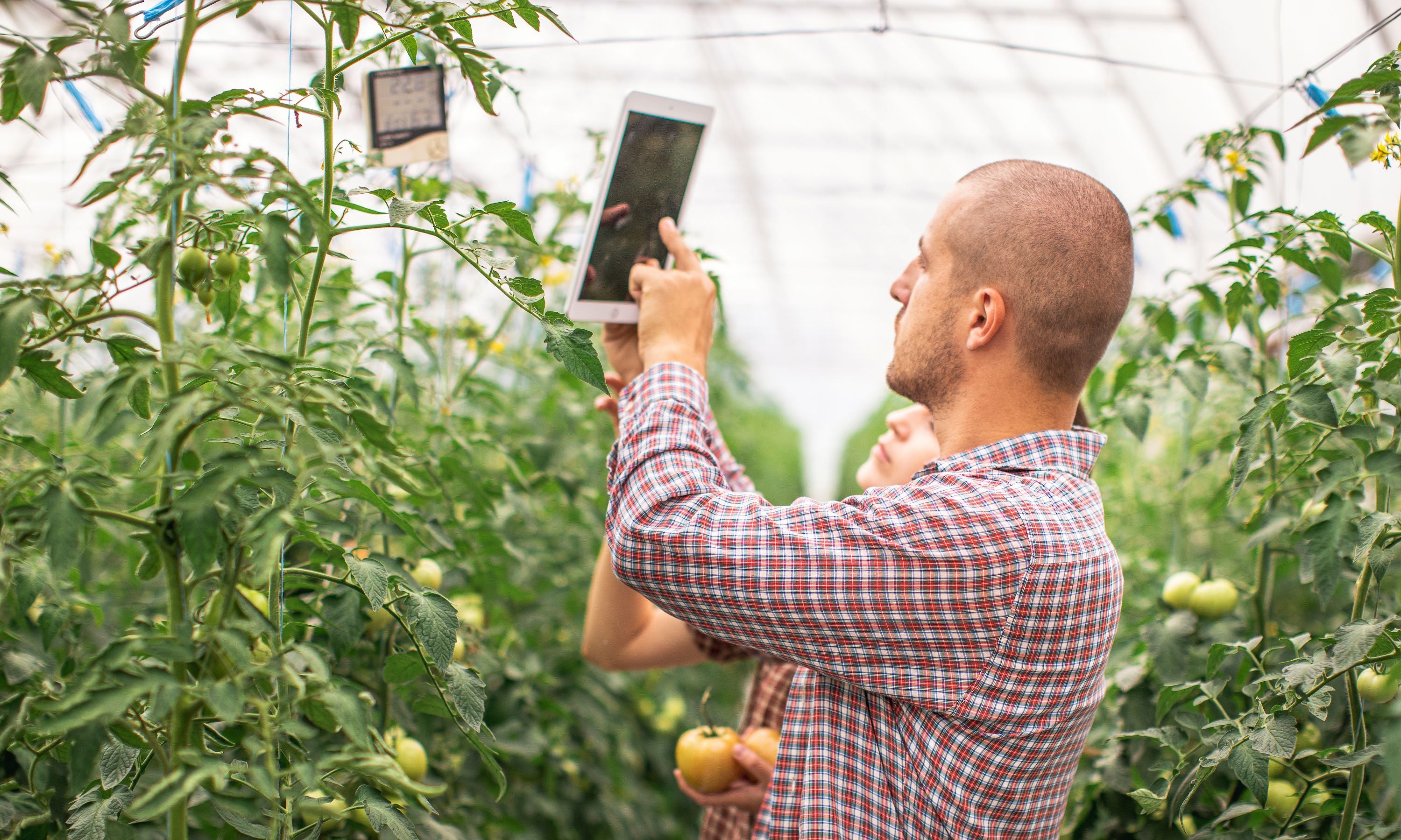The organic agriculture scene has undergone some massive transformations in the last 25 years. From building aquaponic systems based on indigenous farming techniques, to closing the loop on water and electricity consumption, commercial greenhouses have remained at the forefront of tech updates in the industry. With such rapid changes happening in everyday technology, we wanted to give a nod to some of the current trends, and future innovations, for greenhouse growers everywhere.
Current Trends

Hydro, Aero, and Aqua-ponics
Many greenhouses have explored or adopted these new-age crop techniques to produce crops in highly controlled environments. From hydroponic towers at the food court of your local college campus, to acres of fish tanks that are fed by crops grown from their own waste, these new developments in crop management have redesigned greenhouses in a massive way. These technologies have allowed commercial greenhouses to produce crops faster, and with higher yields, while consuming fewer resources such as water, fertilizer, and pest management.
Growing Up (Vertically that is)
Vertical farming is another trend that has gained a lot of popularity among greenhouses. Vertical farming allows growers to easily increase their yield, while maximizing their growing space using vertically stacked layers. U-Pick Strawberry Farm in Deforest, WI, is an amazing local example of how you can achieve massive yields with minimal square footage using vertical farming.
Future Innovations
Artificial Intelligence (It’s Everywhere)
With the proliferation of AI in what seems to be every facet of our everyday lives, agriculture is one of many industries that are using smart tech to take their production to the next level. Some greet the introduction of AI into every facet of society with a groan or an eyeroll, others wholeheartedly welcome the use of Artificial Intelligence to streamline production. No matter which side of the line you fall on, AI has already stepped into its role as the newest innovation that’s taking over greenhouse management.
Smart growing systems allow for automatic changes in temperature, humidity, watering, and light, all based on current growing conditions and the exact needs of the crop. It’s like having a master gardener on site 24/7. This not only makes greenhouses easier to manage for large scale operations, but it allows for customized plant care.
AI is far from ubiquitous in current greenhouses due to being a newer technology with a costly setup fee. These engines also need to be trained and programmed on the specific nature of crop management and identifying needs, which is an ongoing process for existing smart systems. However, as the technology develops, Artificial Intelligence is sure to play an essential role in crop care and management for the future.

Lighting the Way
Future advancements in lighting will go further than just decreasing energy consumption, with LEDs already booting high-pressure sodium lamps out of mainstream use. The future of greenhouse lighting will likely involve the use of spectral-conversion (otherwise known as spectral-shifting) films applied to greenhouse glass. These films are used to filter sunlight to target the specific photons that promote photosynthesis. These filters are currently being researched for their application on individual crop health.
Leafy greens like lettuce have shown high rates of success when using a filter that replaced green light with red light, and increased exposure to far-red light. However, nightshades like tomatoes and eggplants struggled under filtered light conditions. As spectral conversion filters continue to be studied for their ability to increase crop yield in greenhouses, we will likely see this tech used on a more broad-scale basis.
Growing Even Greener
Reducing consumption has always been a consideration for greenhouse growers, from reducing water intake to lowering the energy bill. Many growers are working on closing the loop by utilizing water recirculation systems. These systems allow water to be reused and recycled, reducing fertilizer runoff, and increasing water efficiency. Not only can you get a second life from your liquid nutrient program, but you can reduce overall water consumption.
With energy costs skyrocketing over the last few years, and a push for more sustainable energy use, many greenhouses have been working on finding ways to reduce consumption of electricity. The development of transparent photovoltaics has been encouraging for commercial greenhouses as a way to increase solar energy storage.
Transparent Photovoltaics (TPV), also known as thin-film, are essentially the next evolution of solar panels. These transparent solar cells can easily be integrated to greenhouse siding and windows, without impeding light flow. This technology is likely to be used on a large scale among office buildings, skyscrapers, and homes, as it becomes more readily available, and can bring the same benefits to greenhouses as a way to offset their carbon footprint.
Purple Cow Organics is ready and waiting to work with you as you manage your growing operations through these innovations. We’ve worked with vertical and hydroponic growers with great success. As the industry keep growing, so does Purple Cow Organics. We’re committed to creating innovative and remarkable products, like our most recent liquid broad-spectrum biological – BIOACTIVE LiquiLife™.
Want to hear more about our products? Contact us today and we’ll get you on the path to innovation.
Sources:
Loria, Keith. "Shaping the Future". Greenhouse Product News, Jan 2024, (https://gpnmag.com/article/shaping-the-future/)
Park, Yujin. Runkle, Erik. "Spectral-conversion film potential for greenhouses: Utility of green-to-red photons conversion and far-red filtration for plant growth", PLOS ONE, 23 Feb 2023, (https://journals.plos.org/plosone/article?id=10.1371/journal.pone.0281996)
Kangmin Lee, Han-Don Um, Deokjae Choi, Jeonghwan Park, Namwoo Kim, Hyungwoo Kim, Kwanyong Seo,
"The Development of Transparent Photovoltaics",
Cell Reports Physical Science, (https://www.sciencedirect.com/science/article/pii/S2666386420301478)


